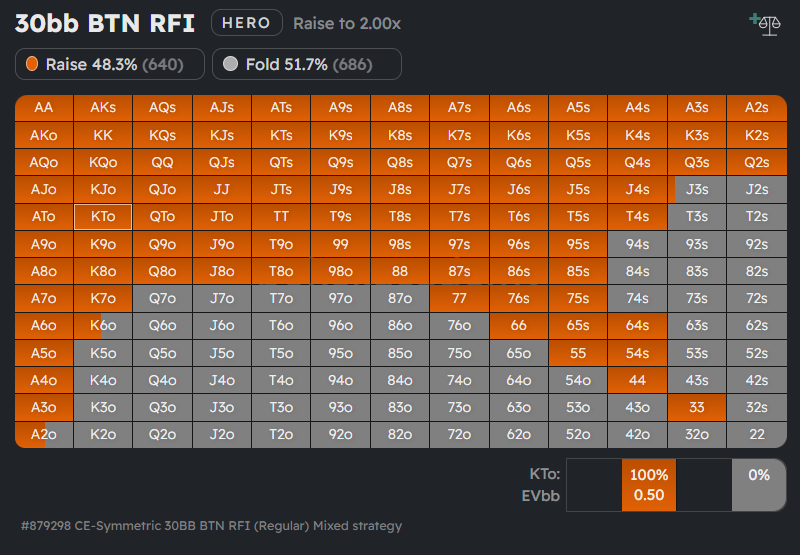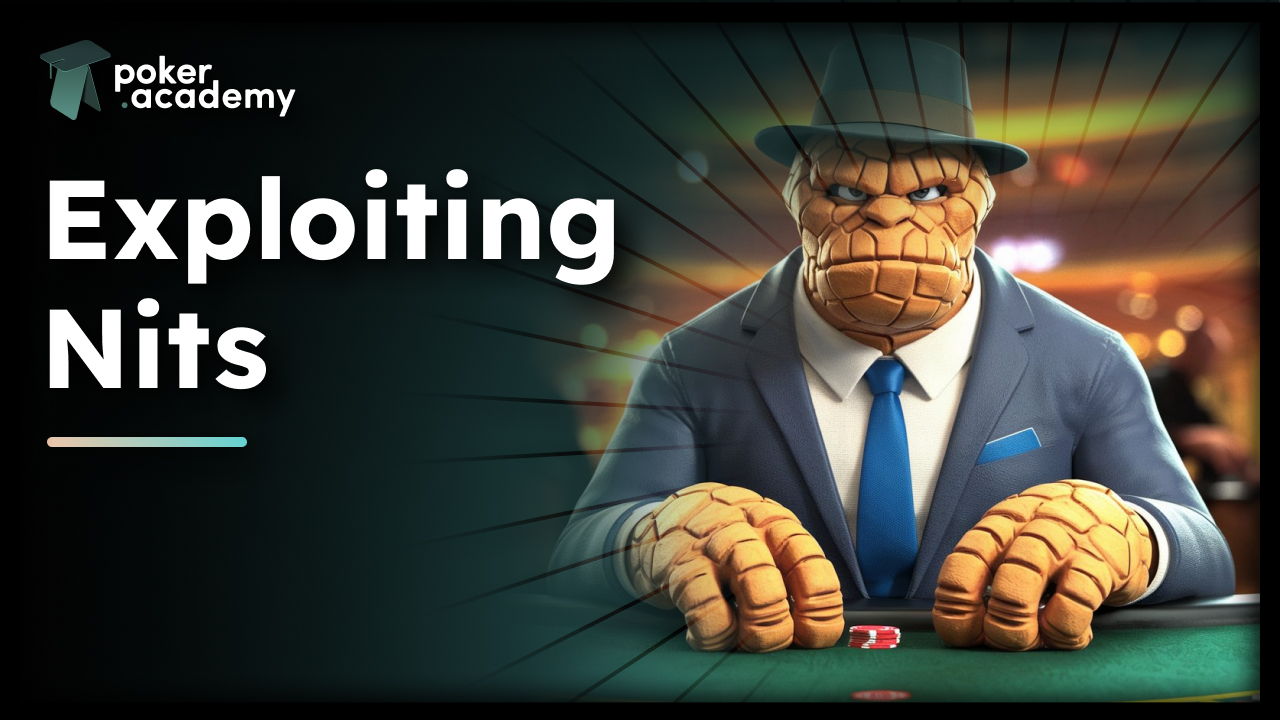There are many types of players. One of the most characteristic ones is nit – passive and tight person, with no intention of bluffing. Their unbalanced poker strategy is allowing you to exploit them and make more money.
How to recognize tight-passive poker players?
Tight-passive poker players are highly risk-averse and play with extreme caution, rarely engaging in aggressive moves unless they are highly confident in their hand. They prefer to avoid large pots unless they believe they are almost guaranteed to win, leading to a tendency to under-bluff and under-aggress. These players are unlikely to engage in risky plays like check-raises or bluffing, preferring instead to let others dictate the action. We probably don’t have to tell you that this is not the best poker strategy for them. Fortunately, it is good for you, because you will know how to exploit it.
Exploiting nits – The simpler the better
Nitty poker players give opponents little reason to invest chips against them. Because they play with such a narrow range of hands, their presence in a pot often reduces the equity of our own hands, as it signals strength. Moreover, they don’t bluff, so calling down with marginal hands or attempting to catch a bluff against them is rarely profitable. This predictability simplifies decisions, allowing us to avoid costly mistakes and focus on exploiting their overly cautious tendencies.
Basic Poker Math can help you improve your poker decision-making process, even against tight-passive players. That’s why we recommend you to read one of Poker Academy’s previous blogs, covering this topic.
Aggression preflop is needed
Aggression preflop is needed
One of the most significant exploitable habits of tight-passive players is their tendency to fold too much preflop. They shy away from defending their blinds or button position more often than they should, creating profitable opportunities for us to open-raise more aggressively. When they are on the Big Blind or Button, positions from which most players would defend frequently, their passive nature makes our raises even more lucrative. Since they fold to pressure, we can generate additional profit by taking pots without seeing the flop.

As you can see, the opening range from the Button at 30 BB deep is quite wide, 48% raising range. You open all the suited fives, off-suited eights, all aces, and a bunch of other suited hands. Here’s the thing – if your opponent in the Big Blind is nitty, you can easily widen your range by opening more off-suited kings and sevens, as well as some additional suited hands. You can’t open all of your hands, though, because between you and the nit there’s a player in the Small Blind who can ruin your plans if you get too loose. If you want to study charts like this and improve your poker fundamentals, you can try Poker Academy’s Preflop Tool, where you will find all the answers you need.
Facing aggression preflop
If we’re saying that nitty players overfold preflop, it means their continuing range is relatively strong. GTO strategies rely on a minimum folding frequency — we defend X% of our range to prevent our opponent from making an auto-profit on their bets.
Long story short, our fold to a 3-bet preflop should be around 60%. But here’s the thing: this is a GTO frequency that applies when facing another GTO player. An average nitty player’s 3-bet frequency is only about 4-5% in total. Defending our range properly against them would be a huge mistake; we would fall into their trap. Folding 90% of the time is not a mistake in most situations, as we’re already profiting from opening against them preflop.
The same goes for 4-betting. These players will typically 4-bet only with QQ+, AK+. So, should we 3-bet/fold AQ, JJ, TT? The simple answer is “Yes.” It’s painful but often correct. Another option is to just flat-call preflop against their raise, but 3-betting is often a strong play against the rest of their range, making it an easy game when they 4-bet with their predictable hands.
Postflop against nits
If a tight-passive player happens to call preflop, the postflop play becomes straightforward. If nit is in position we can bet and expect either a call or a fold, or we can check and likely face a check-back, because as it’s been said – nits don’t like raising with weak hands or weak draws so we can easily bet/fold against even with relatively strong hands. This type of player will not exploit our overfolding. Spots in which we would face a bet and be forced to continue with middle strengthen hands to avoid overfolding, now become comfortable folds. By understanding their tendency to overfold and avoid risky spots, we can adjust our strategy to take the advantage of their overly cautious play.
Nitty players have usually low WTSD and very high W$SD which means that they are rarely at showdown, but when they are, they win over 58% of the time. Usually also it means that they will quickly bet with middle-strong holdings and give up weak hands. By a number, we should see a low bet vs missed cbet, both OOP and IP. How to exploit that? By delaying our bluffs on the later streets and attack their weak-checking hands. But be careful, they usually have tighter preflop range than expected so they will have less unconnected and unsuited hands that a regular player.
Conclusion
Exploiting tight-passive poker players, known as “nits,” is a valuable strategy. These players rarely bluff and play cautiously, making them predictable. By applying preflop aggression and expanding your opening range, especially when they fold too often, you can take advantage of their weaknesses. Their lack of postflop aggression also makes decision-making easier, allowing you to capitalize on their overly cautious nature.
